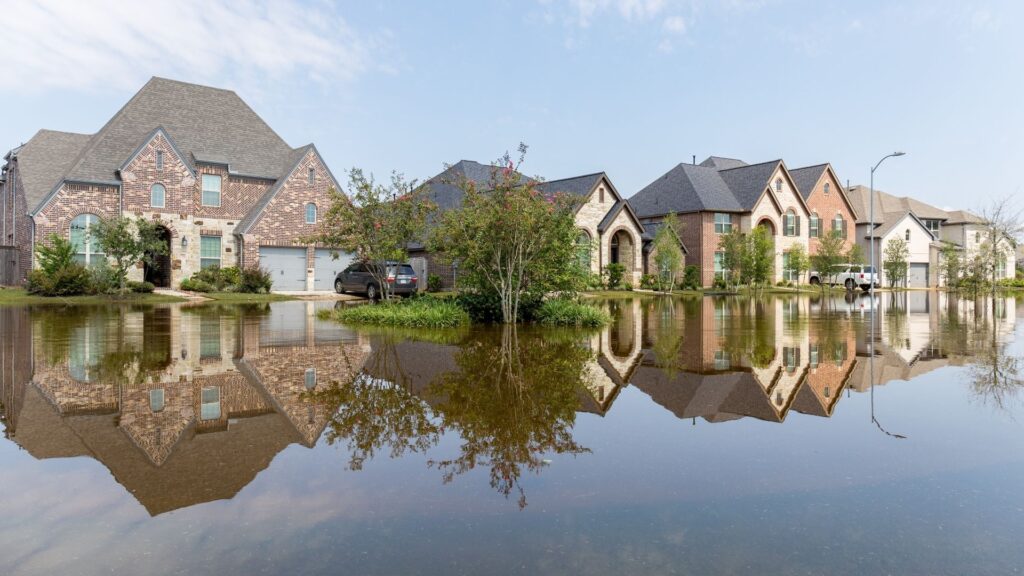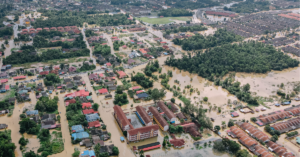How to Flood-Proof Your Home: A Complete Guide
Learn how to flood-proof your home, protect your property, and prepare for emergencies with this complete step-by-step flood readiness guide.

Floods are among the most common and costliest natural disasters. You can’t always predict, but you can always prepare. Use this guide to create a flood-proof home and prepare for the worst before the clouds start to roll in.
What to Know Before Flood-Proofing Your Home
Understand Your Risk
Where it rains, it floods.
In fact, where snow melts, dams collapse or overflow, or storm surges can reach, it floods.
Have your property assessed for the type of flood zone it’s in, along with any potential flood elevation. Many places have flood maps available for public record at the city or county level.
This is something you can do when you’re buying a home. However, you can also check your home’s location anytime through your local agencies or FEMA’s flood map data.
Get Flood Insurance
Your homeowner or renter insurance probably will not cut it here. According to FEMA, most policies do not cover flood damage. That is why it is essential to get flood insurance, especially (but not exclusively) if you live in a noted flood zone.
If your home is damaged during a flooding event, flood insurance will help you recover without destroying your finances. Take frequent photos of your home, including inside cabinets, closets, and drawers. Having detailed visual records of your belongings can make a significant difference when working with your insurance company after a flood.
Make Your Flood Plan
The time to develop your plan for a flood isn’t right before the storm—it’s now. Make a plan that’s right for your home and where it’s located, along with the people and pets living in it. Your plan should establish:
- Evacuation routes
- Shelter plans
- Communication plans
- Ways to receive emergency alerts
Additionally, you should have an emergency kit or “go bag” ready for each person or pet in your household for evacuations or other emergencies. The kit should include:
- Enough nonperishable food for three days
- At least three gallons of water per person
- A first aid kit
- Prescription medications
- Copies of important documents
- A change of clothes
- Your phone and a charger
- Cash
- Toiletries, toilet paper, and hand sanitizer
- Food, water, medication, a leash, and other supplies for each pet
Ready: Home Flood Protection Steps Before the Storm
1. Set Up Proper Drainage
Your property should be set up for proper drainage and have the right grading if you want to prevent severe flooding.
Aside from elevating the areas closest to your home, you may also want to invest in absorbent surfaces that can help the soil around your home take in water more easily. This could include planting local, absorbent vegetation or using pervious pavement materials on your driveway and walkways.
2. Elevate or Anchor Utility Equipment
Put your utility equipment, like air conditioning condensers, heat pumps, and other service equipment, onto high pedestals. Ideally, these should be at least 1 foot above the potential flood elevation.
On the other hand, fuel tanks need to be anchored to the concrete pad they’re installed on. Take both these steps and comply with local regulations for floodproofing to prevent lasting damage and disruptions when it floods.
3. Seal Your Foundation & Install Gutters
If your home doesn’t have gutters, installing them can be a huge investment in your safety. You should also seal your home’s foundation if there are cracks it has accumulated with age or ground shifting over time.
For homes that have window wells in their basement, you should also cover them and make sure the covers won’t accumulate water during heavy rains.
Taking these steps can prevent your basement from flooding and protect your property.
4. Install Flood Vents & Pumps
Sump pumps and flood vents keep water out of the lower levels or crawl space of your home. Have a professional install these long before any possible floods to minimize the potential for damage.
5. Keep Gutters Clear
Many gutter installers add filters or covers to their work to prevent this. However, if your gutters don’t have these—or if there are objects on top of them—you should clear them of any leaves, seeds, or other debris.
Set: Flood-Proofing When the Storm Is Coming
1. Shut Off Electricity
Before forecasted flooding, cut the power at the breaker panel in your home. This prevents any wires or sockets in the house from staying live and can protect you and your family from shock or electrocution if your home is flooded.
2. Protect Valuables
Move any valuables and important paperwork to a safe or the upper levels of your home. You may also want to move:
- Electronics
- Expensive furniture
- Rugs
- Other valuables
You can also elevate appliances and other things you can’t move to higher floors onto blocks tall enough to keep them out of the water during a flood.
3. Deploy Flood Protection Barriers
If your home is at risk of immediate flooding, this could be the decision that saves everything you’ve built. Temporary home flood protection barriers you can use during imminent flooding include:
- Sandbag walls
- Portable flood shields or gates
- Inflatable floodwalls
- Flood skirts
Deployed correctly, these temporary structures can keep water out of your home and prevent thousands of dollars in damage. However, you need to deploy them in advance for them to be effective.
4. Be Prepared to Evacuate
Your family should always have an evacuation plan in place for floods, just like you would for any other natural disaster in your area. Have your “go bags” ready with essentials for every person and pet in your family if authorities issue evacuation orders for your neighborhood.

Go: During & After the Flood
Your life, your family’s lives, and the lives of your pets should always take priority. Flood conditions can change or worsen in seconds, especially during a flash flood. Pay attention to announcements from local authorities and obey evacuation orders when they’re issued.
Important: If you’re evacuating your home or otherwise traveling and encounter a flooded roadway, do not try to drive through the floodwaters. You could get swept away and drown.
Once the immediate danger has passed, you can assess your home for any damage it sustained during the storm. From there, you should:
- Take multiple photos and videos of the damage
- File a claim with your insurance provider
- Maintain good ventilation in any affected areas to prevent the growth of mold
- Clean and disinfect any surfaces and items that the floodwaters reached
- Keep electricity, gas, and other utilities turned off
- Consider getting an assessment from a professional restoration company
Following these steps will help you get your life and your home back to normal, ideally without causing a financial disaster.
An Important Note About TrapBag®
TrapBag® is a durable flood protection barrier system engineered to hold back floodwaters and withstand thousands of pounds of water pressure.
It is commonly used for large-scale erosion control, shoreline protection, and flood mitigation in both public and private infrastructure projects. Proper installation and site assessment are essential for intended performance during flood scenarios.
Learn More About Flood Protection
TrapBag® is more than just a product—it’s a team of flood and erosion control experts. Learn more about flood protection and erosion prevention by exploring our blog and learning about prevention in your area.
Meet the author
Get the Dirt Before the Flood Hits
Stay ahead of flooding, erosion, and disaster response challenges. The Dirt, TrapBag’s monthly newsletter, delivers field-tested tips, real-world case studies, and the latest in barrier technology straight to your inbox.

